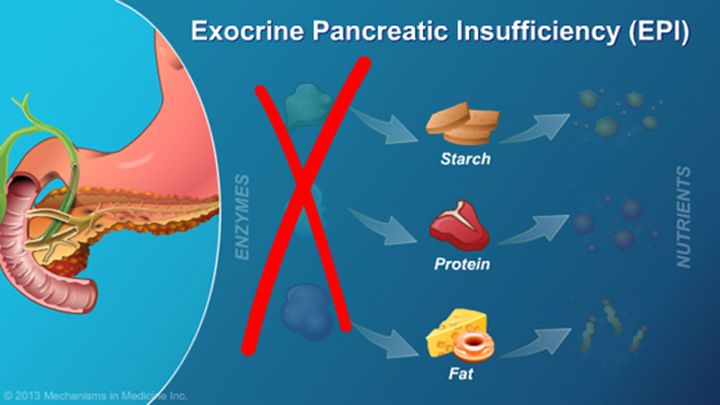Treatment for pancreatic insufficiency. Comprehensive Guide to Exocrine Pancreatic Insufficiency Treatment
How is exocrine pancreatic insufficiency diagnosed. What are the primary treatment options for pancreatic insufficiency. Can pancreatic enzyme replacement therapy effectively manage symptoms. Are there dietary modifications that can help with pancreatic insufficiency. How does pancreatic insufficiency affect nutrient absorption.
Understanding Exocrine Pancreatic Insufficiency: Causes and Symptoms
Exocrine pancreatic insufficiency (EPI) is a condition characterized by inadequate production or secretion of pancreatic enzymes, leading to maldigestion and malabsorption. This condition can result from various underlying causes, including chronic pancreatitis, cystic fibrosis, pancreatic cancer, and gastrointestinal surgeries.
Common symptoms of EPI include:
- Steatorrhea (fatty stools)
- Weight loss
- Abdominal discomfort
- Bloating
- Diarrhea
- Malnutrition
Is EPI a rare condition? While exact prevalence rates vary, EPI is not uncommon, especially among individuals with certain underlying conditions. For instance, it affects up to 90% of people with cystic fibrosis and 30-50% of those with chronic pancreatitis.
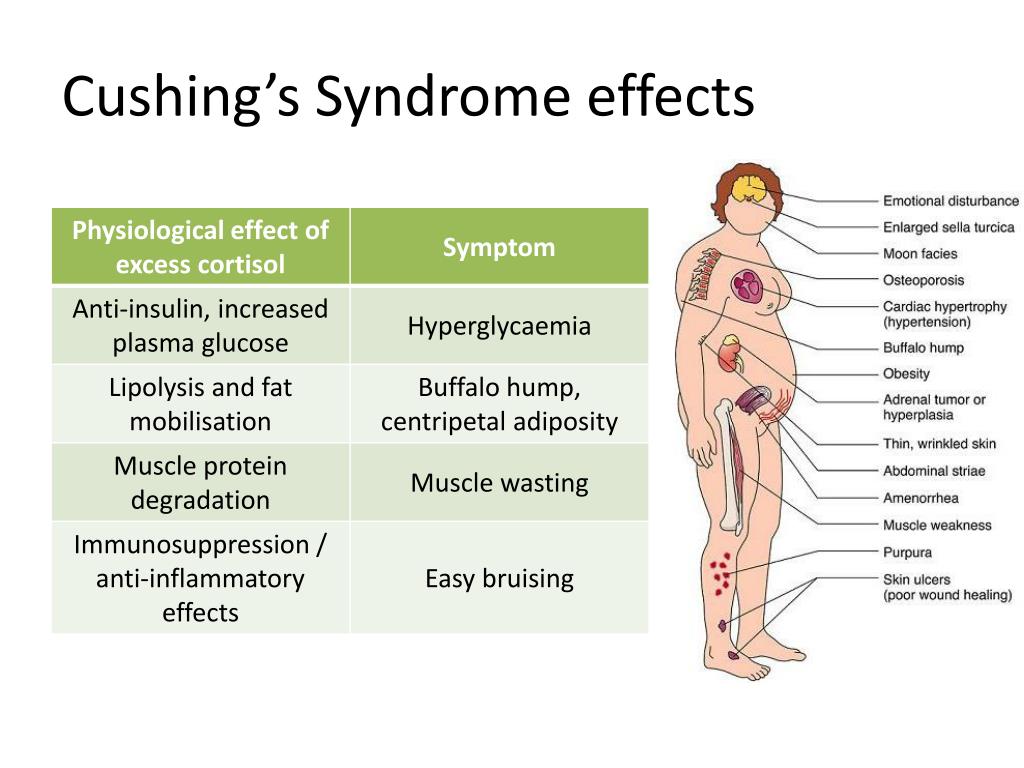
Diagnostic Approaches for Exocrine Pancreatic Insufficiency
Accurate diagnosis of EPI is crucial for effective management. Several diagnostic methods are available, each with its own strengths and limitations:
Fecal Elastase Test
This non-invasive test measures the levels of elastase, a pancreatic enzyme, in stool samples. Low levels indicate pancreatic insufficiency. How accurate is the fecal elastase test? While it has a high sensitivity for moderate to severe EPI, it may miss milder cases.
72-Hour Fecal Fat Test
This test quantifies fat malabsorption by measuring fat content in stool samples collected over 72 hours. It’s considered the gold standard for diagnosing fat malabsorption but can be cumbersome for patients.
Serum Nutritional Markers
Analysis of certain blood markers, such as fat-soluble vitamins (A, D, E, K) and prealbumin, can indirectly indicate malabsorption associated with EPI. However, these tests are not specific to EPI and may be affected by other conditions.

Pancreatic Enzyme Replacement Therapy: The Cornerstone of EPI Treatment
Pancreatic enzyme replacement therapy (PERT) is the primary treatment for EPI. It involves oral administration of pancreatic enzymes to compensate for the insufficient production by the pancreas.
How does PERT work? PERT supplements contain a mixture of digestive enzymes, including lipase, amylase, and protease. These enzymes help break down fats, carbohydrates, and proteins, respectively, improving nutrient absorption and alleviating symptoms.
Dosing and Administration
Proper dosing of PERT is crucial for optimal effectiveness. The dose is typically based on the lipase content and adjusted according to the patient’s weight, symptoms, and fat intake. Are there guidelines for PERT dosing? Yes, various professional organizations provide recommendations, but individualization is key.
- Initial dose: 500-1,000 lipase units/kg/meal
- Maximum dose: 2,500 lipase units/kg/meal or 10,000 lipase units/kg/day
PERT should be taken with meals and snacks to ensure proper mixing with food. Timing is crucial – enzymes should be consumed at the beginning and during meals for maximum efficacy.

Efficacy and Monitoring
How effective is PERT in managing EPI symptoms? Studies have shown that PERT can significantly improve fat absorption, reduce steatorrhea, and enhance nutritional status in patients with EPI. However, response to treatment can vary, and regular monitoring is essential.
Monitoring parameters may include:
- Symptom improvement
- Weight gain
- Nutritional status (blood tests for vitamins and minerals)
- Quality of life assessments
Dietary Modifications and Nutritional Support in EPI Management
While PERT is the mainstay of treatment, dietary modifications play a crucial role in managing EPI. The goal is to optimize nutrient absorption and prevent malnutrition.
Fat Intake Considerations
Contrary to previous beliefs, severely restricting fat intake is no longer recommended for most EPI patients. Why is this approach outdated? Severe fat restriction can lead to essential fatty acid deficiencies and exacerbate malnutrition. Instead, a balanced approach is preferred.
Current dietary recommendations include:

- Moderate fat intake (30-40% of total calories)
- Emphasis on easily digestible fats (medium-chain triglycerides)
- Small, frequent meals to improve enzyme efficacy
Micronutrient Supplementation
EPI often leads to deficiencies in fat-soluble vitamins (A, D, E, K) and certain minerals. Supplementation may be necessary to prevent complications. How should micronutrient supplementation be approached? Individualized supplementation based on regular blood tests and clinical assessment is recommended.
Managing Complications and Comorbidities in EPI
EPI can lead to various complications if left untreated or inadequately managed. Understanding and addressing these issues is crucial for comprehensive patient care.
Bone Health
Patients with EPI, especially those with chronic pancreatitis, are at increased risk of osteoporosis and fractures. Why is bone health compromised in EPI? Malabsorption of vitamin D and calcium, along with chronic inflammation, contribute to bone loss.
Management strategies include:
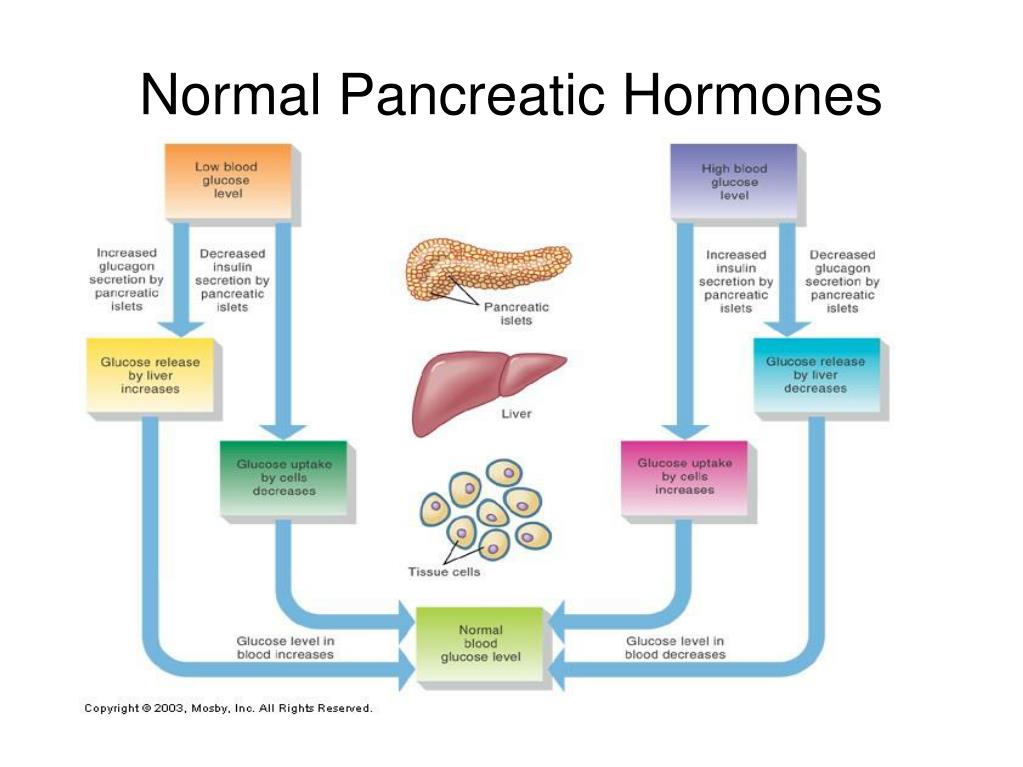
- Regular bone density scans
- Adequate calcium and vitamin D supplementation
- Weight-bearing exercises
- Consideration of bisphosphonates in severe cases
Cardiovascular Risk
EPI may be associated with an altered lipid profile and increased cardiovascular risk. How does EPI affect cardiovascular health? Malabsorption can lead to low levels of HDL cholesterol and fat-soluble antioxidants, potentially increasing atherosclerosis risk.
Preventive measures include:
- Regular lipid profile monitoring
- Lifestyle modifications (smoking cessation, exercise)
- Consideration of statins in high-risk patients
Emerging Therapies and Future Directions in EPI Treatment
While PERT remains the gold standard for EPI treatment, research is ongoing to develop new therapies and improve existing ones. What are some promising areas of research in EPI management?
Lipase Delivery Systems
Innovative delivery systems aim to improve the efficacy of pancreatic enzymes. These include:
- Enteric-coated microspheres for better dispersion
- pH-sensitive coatings for targeted release
- Lipase crystals for enhanced stability
Gene Therapy
For conditions like cystic fibrosis, which can lead to EPI, gene therapy approaches are being explored. How might gene therapy benefit EPI patients? By addressing the underlying genetic defect, it could potentially restore normal pancreatic function.

Stem Cell Therapy
Research into stem cell-based therapies for pancreatic regeneration is ongoing. While still in early stages, this approach holds promise for restoring pancreatic function in conditions like chronic pancreatitis.
Psychosocial Aspects of Living with EPI
The impact of EPI extends beyond physical symptoms, affecting patients’ quality of life and mental health. Addressing these aspects is crucial for comprehensive care.
Quality of Life Considerations
EPI can significantly impact daily life, from dietary restrictions to medication adherence. How can healthcare providers support patients in managing these challenges? A multidisciplinary approach involving nutritionists, psychologists, and social workers can provide comprehensive support.
Patient Education and Self-Management
Empowering patients with knowledge and self-management skills is essential for long-term success. Key areas of education include:
- Understanding EPI and its treatment
- Proper use of PERT
- Dietary management strategies
- Recognition of complications
Can patient support groups be beneficial for those with EPI? Yes, support groups can provide valuable peer support, practical tips, and a sense of community for individuals living with EPI.

In conclusion, exocrine pancreatic insufficiency is a complex condition requiring a multifaceted approach to management. While pancreatic enzyme replacement therapy remains the cornerstone of treatment, a comprehensive strategy incorporating dietary modifications, nutritional support, and attention to potential complications is essential. As research continues, new therapies and improved management strategies hold promise for enhancing the quality of life for individuals living with EPI. Healthcare providers play a crucial role in not only managing the physical aspects of the condition but also addressing the psychosocial impact, ensuring holistic care for patients with EPI.
Diagnosis and treatment of pancreatic exocrine insufficiency
1. DiMagno EP, Go VL, Summerskill WH. Relations between pancreatic enzyme ouputs and malabsorption in severe pancreatic insufficiency. N Engl J Med. 1973;288:813–815. [PubMed] [Google Scholar]
2. Leeds JS, Hopper AD, Hurlstone DP, Edwards SJ, McAlindon ME, Lobo AJ, Donnelly MT, Morley S, Sanders DS. Is exocrine pancreatic insufficiency in adult coeliac disease a cause of persisting symptoms? Aliment Pharmacol Ther. 2007;25:265–271. [PubMed] [Google Scholar]
3. Kingham JG, Levison DA, Fairclough PD. Diarrhoea and reversible enteropathy in Zollinger-Ellison syndrome. Lancet. 1981;2:610–612. [PubMed] [Google Scholar]
4. Domínguez-Muñoz JE. Pancreatic enzyme replacement therapy: exocrine pancreatic insufficiency after gastrointestinal surgery. HPB (Oxford) 2009;11 Suppl 3:3–6. [PMC free article] [PubMed] [Google Scholar]
5. Keller J, Layer P. Human pancreatic exocrine response to nutrients in health and disease. Gut. 2005;54 Suppl 6:vi1–v28. [PMC free article] [PubMed] [Google Scholar]
Gut. 2005;54 Suppl 6:vi1–v28. [PMC free article] [PubMed] [Google Scholar]
6. Anagnostides A, Chadwick VS, Selden AC, Maton PN. Sham feeding and pancreatic secretion. Evidence for direct vagal stimulation of enzyme output. Gastroenterology. 1984;87:109–114. [PubMed] [Google Scholar]
7. White TT, Mcalexander RA, Magee DF. The effect of gastric distension on duodenal aspirates in man. Gastroenterology. 1963;44:48–51. [PubMed] [Google Scholar]
8. Watanabe S, Shiratori K, Takeuchi T, Chey WY, You CH, Chang TM. Release of cholecystokinin and exocrine pancreatic secretion in response to an elemental diet in human subjects. Dig Dis Sci. 1986;31:919–924. [PubMed] [Google Scholar]
9. Pandol SJ. Neurohumoral control of exocrine pancreatic secretion. Curr Opin Gastroenterol. 2003;19:443–446. [PubMed] [Google Scholar]
10. Schaffalitzky de Muckadell OB, Fahrenkrug J, Nielsen J, Westphall I, Worning H. Meal-stimulated secretin release in man: effect of acid and bile. Scand J Gastroenterol. 1981;16:981–988. [PubMed] [Google Scholar]
1981;16:981–988. [PubMed] [Google Scholar]
11. Schaffalitzky de Muckadell OB, Fahrenkrug J, Watt-Boolsen S, Worning H. Pancreatic response and plasma secretin concentration during infusion of low dose secretin in man. Scand J Gastroenterol. 1978;13:305–311. [PubMed] [Google Scholar]
12. DiMagno EP, Malagelada JR, Go VL, Moertel CG. Fate of orally ingested enzymes in pancreatic insufficiency. Comparison of two dosage schedules. N Engl J Med. 1977;296:1318–1322. [PubMed] [Google Scholar]
13. Layer P, Yamamoto H, Kalthoff L, Clain JE, Bakken LJ, DiMagno EP. The different courses of early- and late-onset idiopathic and alcoholic chronic pancreatitis. Gastroenterology. 1994;107:1481–1487. [PubMed] [Google Scholar]
14. Lindkvist B, Domínguez-Muñoz JE, Luaces-Regueira M, Castiñeiras-Alvariño M, Nieto-Garcia L, Iglesias-Garcia J. Serum nutritional markers for prediction of pancreatic exocrine insufficiency in chronic pancreatitis. Pancreatology. 2012;12:305–310. [PubMed] [Google Scholar]
15. Sikkens EC, Cahen DL, Koch AD, Braat H, Poley JW, Kuipers EJ, Bruno MJ. The prevalence of fat-soluble vitamin deficiencies and a decreased bone mass in patients with chronic pancreatitis. Pancreatology. 2013;13:238–242. [PubMed] [Google Scholar]
Sikkens EC, Cahen DL, Koch AD, Braat H, Poley JW, Kuipers EJ, Bruno MJ. The prevalence of fat-soluble vitamin deficiencies and a decreased bone mass in patients with chronic pancreatitis. Pancreatology. 2013;13:238–242. [PubMed] [Google Scholar]
16. Tignor AS, Wu BU, Whitlock TL, Lopez R, Repas K, Banks PA, Conwell D. High prevalence of low-trauma fracture in chronic pancreatitis. Am J Gastroenterol. 2010;105:2680–2686. [PubMed] [Google Scholar]
17. Van De Kamer JH, Ten Bokkel Huinink H, Weyers HA. Rapid method for the determination of fat in feces. J Biol Chem. 1949;177:347–355. [PubMed] [Google Scholar]
18. Toouli J, Biankin AV, Oliver MR, Pearce CB, Wilson JS, Wray NH. Management of pancreatic exocrine insufficiency: Australasian Pancreatic Club recommendations. Med J Aust. 2010;193:461–467. [PubMed] [Google Scholar]
19. Frulloni L, Falconi M, Gabbrielli A, Gaia E, Graziani R, Pezzilli R, Uomo G, Andriulli A, Balzano G, Benini L, et al. Italian consensus guidelines for chronic pancreatitis. Dig Liver Dis. 2010;42 Suppl 6:S381–S406. [PubMed] [Google Scholar]
Dig Liver Dis. 2010;42 Suppl 6:S381–S406. [PubMed] [Google Scholar]
20. Hartmann D, Felix K, Ehmann M, Schnölzer M, Fiedler S, Bogumil R, Büchler M, Friess H. Protein expression profiling reveals distinctive changes in serum proteins associated with chronic pancreatitis. Pancreas. 2007;35:334–342. [PubMed] [Google Scholar]
21. Montalto G, Soresi M, Carroccio A, Scafidi E, Barbagallo CM, Ippolito S, Notarbartolo A. Lipoproteins and chronic pancreatitis. Pancreas. 1994;9:137–138. [PubMed] [Google Scholar]
22. Sobral-Oliveira MB, Faintuch J, Guarita DR, Oliveira CP, Carrilho FJ. Nutritional profile of asymptomatic alcoholic patients. Arq Gastroenterol. 2011;48:112–118. [PubMed] [Google Scholar]
23. Schnitzler CM, Mesquita JM, Shires R. Cortical and trabecular bone microarchitecture and turnover in alcohol-induced chronic pancreatitis: a histomorphometric study. J Bone Miner Metab. 2010;28:456–467. [PubMed] [Google Scholar]
24. Kalvaria I, Labadarios D, Shephard GS, Visser L, Marks IN. Biochemical vitamin E deficiency in chronic pancreatitis. Int J Pancreatol. 1986;1:119–128. [PubMed] [Google Scholar]
Biochemical vitamin E deficiency in chronic pancreatitis. Int J Pancreatol. 1986;1:119–128. [PubMed] [Google Scholar]
25. Twersky Y, Bank S. Nutritional deficiencies in chronic pancreatitis. Gastroenterol Clin North Am. 1989;18:543–565. [PubMed] [Google Scholar]
26. Marotta F, Labadarios D, Frazer L, Girdwood A, Marks IN. Fat-soluble vitamin concentration in chronic alcohol-induced pancreatitis. Relationship with steatorrhea. Dig Dis Sci. 1994;39:993–998. [PubMed] [Google Scholar]
27. Glasbrenner B, Malfertheiner P, Büchler M, Kuhn K, Ditschuneit H. Vitamin B12 and folic acid deficiency in chronic pancreatitis: a relevant disorder? Klin Wochenschr. 1991;69:168–172. [PubMed] [Google Scholar]
28. Domínguez-Muñoz JE, Alvarez-Castro A, Lariño-Noia J, Nieto L, Iglesias-García J. Endoscopic ultrasonography of the pancreas as an indirect method to predict pancreatic exocrine insufficiency in patients with chronic pancreatitis. Pancreas. 2012;41:724–728. [PubMed] [Google Scholar]
29. Domínguez-Muñoz JE, Manes G, Pieramico O, Büchler M, Malfertheiner P. Effect of pancreatic ductal and parenchymal changes on exocrine function in chronic pancreatitis. Pancreas. 1995;10:31–35. [PubMed] [Google Scholar]
Domínguez-Muñoz JE, Manes G, Pieramico O, Büchler M, Malfertheiner P. Effect of pancreatic ductal and parenchymal changes on exocrine function in chronic pancreatitis. Pancreas. 1995;10:31–35. [PubMed] [Google Scholar]
30. Catalano MF, Sahai A, Levy M, Romagnuolo J, Wiersema M, Brugge W, Freeman M, Yamao K, Canto M, Hernandez LV. EUS-based criteria for the diagnosis of chronic pancreatitis: the Rosemont classification. Gastrointest Endosc. 2009;69:1251–1261. [PubMed] [Google Scholar]
31. Sziegoleit A, Krause E, Klör HU, Kanacher L, Linder D. Elastase 1 and chymotrypsin B in pancreatic juice and feces. Clin Biochem. 1989;22:85–89. [PubMed] [Google Scholar]
32. Löser C, Möllgaard A, Fölsch UR. Faecal elastase 1: a novel, highly sensitive, and specific tubeless pancreatic function test. Gut. 1996;39:580–586. [PMC free article] [PubMed] [Google Scholar]
33. Leeds JS, Oppong K, Sanders DS. The role of fecal elastase-1 in detecting exocrine pancreatic disease. Nat Rev Gastroenterol Hepatol.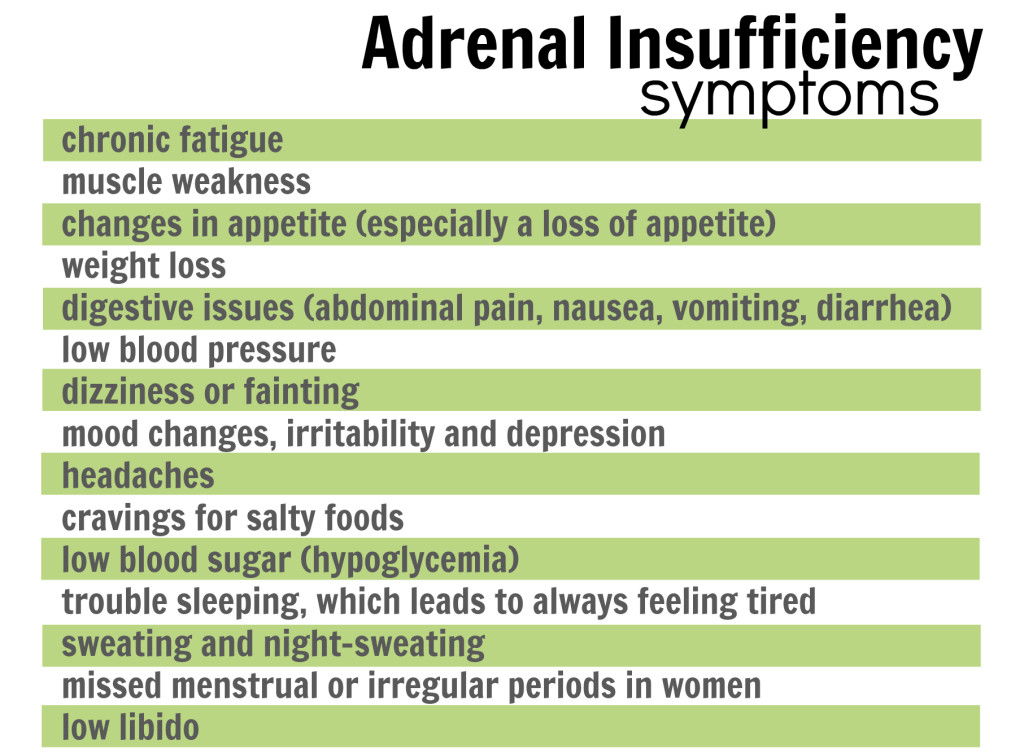 2011;8:405–415. [PubMed] [Google Scholar]
2011;8:405–415. [PubMed] [Google Scholar]
34. Stein J, Jung M, Sziegoleit A, Zeuzem S, Caspary WF, Lembcke B. Immunoreactive elastase I: clinical evaluation of a new noninvasive test of pancreatic function. Clin Chem. 1996;42:222–226. [PubMed] [Google Scholar]
35. Hardt PD, Marzeion AM, Schnell-Kretschmer H, Wüsten O, Nalop J, Zekorn T, Klör HU. Fecal elastase 1 measurement compared with endoscopic retrograde cholangiopancreatography for the diagnosis of chronic pancreatitis. Pancreas. 2002;25:e6–e9. [PubMed] [Google Scholar]
36. Bilgin M, Bilgin S, Balci NC, Momtahen AJ, Bilgin Y, Klör HU, Rau WS. Magnetic resonance imaging and magnetic resonance cholangiopancreatography findings compared with fecal elastase 1 measurement for the diagnosis of chronic pancreatitis. Pancreas. 2008;36:e33–e39. [PubMed] [Google Scholar]
37. Benini L, Amodio A, Campagnola P, Agugiaro F, Cristofori C, Micciolo R, Magro A, Gabbrielli A, Cabrini G, Moser L, et al. Fecal elastase-1 is useful in the detection of steatorrhea in patients with pancreatic diseases but not after pancreatic resection. Pancreatology. 2013;13:38–42. [PubMed] [Google Scholar]
Pancreatology. 2013;13:38–42. [PubMed] [Google Scholar]
38. Vantrappen GR, Rutgeerts PJ, Ghoos YF, Hiele MI. Mixed triglyceride breath test: a noninvasive test of pancreatic lipase activity in the duodenum. Gastroenterology. 1989;96:1126–1134. [PubMed] [Google Scholar]
39. Bożek M, Jonderko K, Piłka M. On a refinement of the ¹³C-mixed TAG breath test. Br J Nutr. 2012;107:211–217. [PubMed] [Google Scholar]
40. Iglesias-Garcia J, Vilarino M, Iglesias-Rey M, Lourido V, Dominguez-Munoz E. Accuracy of the optimized 13C-mixed triglyceride breath test for the diagnosis of steatorrhea in clinical practice. Gastroenterology. 2003;124 Supp 1:A631. [Google Scholar]
41. Boedeker C, Goetze O, Pfaffenbach B, Luypaerts A, Geypens B, Adamek RJ. 13C mixed-triglyceride breath test: isotope selective non-dispersive infrared spectrometry in comparison with isotope ratio mass spectrometry in volunteers and patients with chronic pancreatitis. Scand J Gastroenterol. 1999;34:1153–1156. [PubMed] [Google Scholar]
[PubMed] [Google Scholar]
42. Löser C, Brauer C, Aygen S, Hennemann O, Fölsch UR. Comparative clinical evaluation of the 13C-mixed triglyceride breath test as an indirect pancreatic function test. Scand J Gastroenterol. 1998;33:327–334. [PubMed] [Google Scholar]
43. Keller J, Brückel S, Jahr C, Layer P. A modified ¹³C-mixed triglyceride breath test detects moderate pancreatic exocrine insufficiency. Pancreas. 2011;40:1201–1205. [PubMed] [Google Scholar]
44. Domínguez-Muñoz JE, Iglesias-García J, Vilariño-Insua M, Iglesias-Rey M. 13C-mixed triglyceride breath test to assess oral enzyme substitution therapy in patients with chronic pancreatitis. Clin Gastroenterol Hepatol. 2007;5:484–488. [PubMed] [Google Scholar]
45. Burton P, Evans DG, Harper AA, Howath T, Oleesky S, Scott JE, Varley H. A test of pancreatic function in man based on the analysis of duodenal contents after administration of secretin and pancreozymin. Gut. 1960;1:111–124. [PMC free article] [PubMed] [Google Scholar]
46. Borgstrom B, Dahlqvist A, Lundh G. On the site of absorption of fat from the human small intestine. Gut. 1962;3:315–317. [PMC free article] [PubMed] [Google Scholar]
Borgstrom B, Dahlqvist A, Lundh G. On the site of absorption of fat from the human small intestine. Gut. 1962;3:315–317. [PMC free article] [PubMed] [Google Scholar]
47. Stevens T, Conwell DL, Zuccaro G, Van Lente F, Lopez R, Purich E, Fein S. A prospective crossover study comparing secretin-stimulated endoscopic and Dreiling tube pancreatic function testing in patients evaluated for chronic pancreatitis. Gastrointest Endosc. 2008;67:458–466. [PubMed] [Google Scholar]
48. Stevens T, Conwell DL, Zuccaro G, Van Lente F, Purich E, Khandwala F, Fein S. A randomized crossover study of secretin-stimulated endoscopic and dreiling tube pancreatic function test methods in healthy subjects. Am J Gastroenterol. 2006;101:351–355. [PubMed] [Google Scholar]
49. Schneider AR, Hammerstingl R, Heller M, Povse N, Murzynski L, Vogl TJ, Caspary WF, Stein J. Does secretin-stimulated MRCP predict exocrine pancreatic insufficiency?: A comparison with noninvasive exocrine pancreatic function tests. J Clin Gastroenterol. 2006;40:851–855. [PubMed] [Google Scholar]
J Clin Gastroenterol. 2006;40:851–855. [PubMed] [Google Scholar]
50. Balci NC, Smith A, Momtahen AJ, Alkaade S, Fattahi R, Tariq S, Burton F. MRI and S-MRCP findings in patients with suspected chronic pancreatitis: correlation with endoscopic pancreatic function testing (ePFT) J Magn Reson Imaging. 2010;31:601–606. [PubMed] [Google Scholar]
51. Domínguez-Muñoz JE. Pancreatic exocrine insufficiency: diagnosis and treatment. J Gastroenterol Hepatol. 2011;26 Suppl 2:12–16. [PubMed] [Google Scholar]
52. Gullo L, Barbara L, Labò G. Effect of cessation of alcohol use on the course of pancreatic dysfunction in alcoholic pancreatitis. Gastroenterology. 1988;95:1063–1068. [PubMed] [Google Scholar]
53. Yadav D, Lowenfels AB. The epidemiology of pancreatitis and pancreatic cancer. Gastroenterology. 2013;144:1252–1261. [PMC free article] [PubMed] [Google Scholar]
54. Law R, Parsi M, Lopez R, Zuccaro G, Stevens T. Cigarette smoking is independently associated with chronic pancreatitis.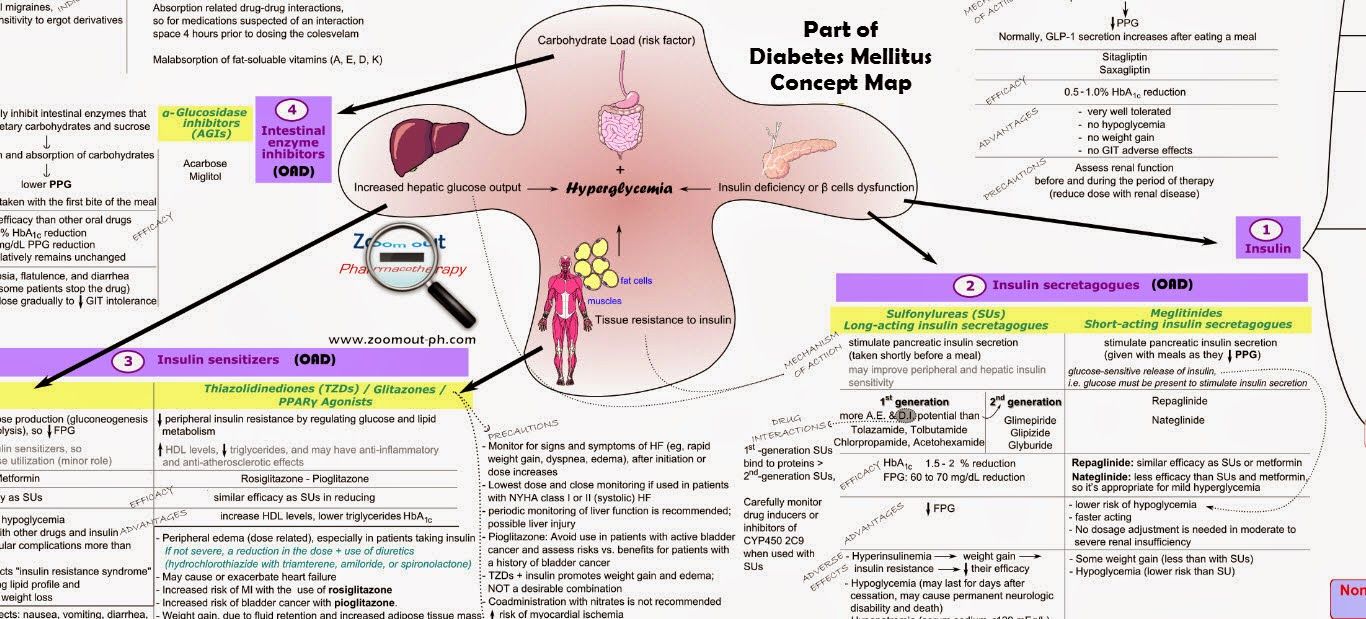 Pancreatology. 2010;10:54–59. [PubMed] [Google Scholar]
Pancreatology. 2010;10:54–59. [PubMed] [Google Scholar]
55. Maisonneuve P, Lowenfels AB, Müllhaupt B, Cavallini G, Lankisch PG, Andersen JR, Dimagno EP, Andrén-Sandberg A, Domellöf L, Frulloni L, et al. Cigarette smoking accelerates progression of alcoholic chronic pancreatitis. Gut. 2005;54:510–514. [PMC free article] [PubMed] [Google Scholar]
56. Löhr JM, Hummel FM, Pirilis KT, Steinkamp G, Körner A, Henniges F. Properties of different pancreatin preparations used in pancreatic exocrine insufficiency. Eur J Gastroenterol Hepatol. 2009;21:1024–1031. [PubMed] [Google Scholar]
57. Safdi M, Bekal PK, Martin S, Saeed ZA, Burton F, Toskes PP. The effects of oral pancreatic enzymes (Creon 10 capsule) on steatorrhea: a multicenter, placebo-controlled, parallel group trial in subjects with chronic pancreatitis. Pancreas. 2006;33:156–162. [PubMed] [Google Scholar]
58. Toskes PP, Secci A, Thieroff-Ekerdt R. Efficacy of a novel pancreatic enzyme product, EUR-1008 (Zenpep), in patients with exocrine pancreatic insufficiency due to chronic pancreatitis. Pancreas. 2011;40:376–382. [PubMed] [Google Scholar]
Pancreas. 2011;40:376–382. [PubMed] [Google Scholar]
59. Whitcomb DC, Lehman GA, Vasileva G, Malecka-Panas E, Gubergrits N, Shen Y, Sander-Struckmeier S, Caras S. Pancrelipase delayed-release capsules (CREON) for exocrine pancreatic insufficiency due to chronic pancreatitis or pancreatic surgery: A double-blind randomized trial. Am J Gastroenterol. 2010;105:2276–2286. [PubMed] [Google Scholar]
60. Thorat V, Reddy N, Bhatia S, Bapaye A, Rajkumar JS, Kini DD, Kalla MM, Ramesh H. Randomised clinical trial: the efficacy and safety of pancreatin enteric-coated minimicrospheres (Creon 40000 MMS) in patients with pancreatic exocrine insufficiency due to chronic pancreatitis–a double-blind, placebo-controlled study. Aliment Pharmacol Ther. 2012;36:426–436. [PMC free article] [PubMed] [Google Scholar]
61. Czakó L, Takács T, Hegyi P, Prónai L, Tulassay Z, Lakner L, Döbrönte Z, Boda K, Lonovics J. Quality of life assessment after pancreatic enzyme replacement therapy in chronic pancreatitis. Can J Gastroenterol. 2003;17:597–603. [PubMed] [Google Scholar]
Can J Gastroenterol. 2003;17:597–603. [PubMed] [Google Scholar]
62. Ramesh H, Reddy N, Bhatia S, Rajkumar JS, Bapaye A, Kini D, Kalla M, Thorat V. A 51-week, open-label clinical trial in India to assess the efficacy and safety of pancreatin 40000 enteric-coated minimicrospheres in patients with pancreatic exocrine insufficiency due to chronic pancreatitis. Pancreatology. 2013;13:133–139. [PubMed] [Google Scholar]
63. Dumasy V, Delhaye M, Cotton F, Deviere J. Fat malabsorption screening in chronic pancreatitis. Am J Gastroenterol. 2004;99:1350–1354. [PubMed] [Google Scholar]
64. Domínguez-Muñoz JE, Iglesias-García J. Oral pancreatic enzyme substitution therapy in chronic pancreatitis: is clinical response an appropriate marker for evaluation of therapeutic efficacy? JOP. 2010;11:158–162. [PubMed] [Google Scholar]
65. Domínguez-Muñoz JE. Chronic pancreatitis and persistent steatorrhea: what is the correct dose of enzymes? Clin Gastroenterol Hepatol. 2011;9:541–546. [PubMed] [Google Scholar]
[PubMed] [Google Scholar]
66. Morán CE, Sosa EG, Martinez SM, Geldern P, Messina D, Russo A, Boerr L, Bai JC. Bone mineral density in patients with pancreatic insufficiency and steatorrhea. Am J Gastroenterol. 1997;92:867–871. [PubMed] [Google Scholar]
67. Haaber AB, Rosenfalck AM, Hansen B, Hilsted J, Larsen S. Bone mineral metabolism, bone mineral density, and body composition in patients with chronic pancreatitis and pancreatic exocrine insufficiency. Int J Pancreatol. 2000;27:21–27. [PubMed] [Google Scholar]
68. de-Madaria E, Abad-González A, Aparicio JR, Aparisi L, Boadas J, Boix E, de-Las-Heras G, Domínguez-Muñoz E, Farré A, Fernández-Cruz L, et al. The Spanish Pancreatic Club’s recommendations for the diagnosis and treatment of chronic pancreatitis: part 2 (treatment) Pancreatology. 2013;13:18–28. [PubMed] [Google Scholar]
69. Gubergrits N, Malecka-Panas E, Lehman GA, Vasileva G, Shen Y, Sander-Struckmeier S, Caras S, Whitcomb DC. A 6-month, open-label clinical trial of pancrelipase delayed-release capsules (Creon) in patients with exocrine pancreatic insufficiency due to chronic pancreatitis or pancreatic surgery. Aliment Pharmacol Ther. 2011;33:1152–1161. [PubMed] [Google Scholar]
Aliment Pharmacol Ther. 2011;33:1152–1161. [PubMed] [Google Scholar]
70. FitzSimmons SC, Burkhart GA, Borowitz D, Grand RJ, Hammerstrom T, Durie PR, Lloyd-Still JD, Lowenfels AB. High-dose pancreatic-enzyme supplements and fibrosing colonopathy in children with cystic fibrosis. N Engl J Med. 1997;336:1283–1289. [PubMed] [Google Scholar]
71. Nakajima K, Oshida H, Muneyuki T, Kakei M. Pancrelipase: an evidence-based review of its use for treating pancreatic exocrine insufficiency. Core Evid. 2012;7:77–91. [PMC free article] [PubMed] [Google Scholar]
72. Hoffmeister A, Mayerle J, Beglinger C, Büchler MW, Bufler P, Dathe K, Fölsch UR, Friess H, Izbicki J, Kahl S, et al. [S3-Consensus guidelines on definition, etiology, diagnosis and medical, endoscopic and surgical management of chronic pancreatitis German Society of Digestive and Metabolic Diseases (DGVS)] Z Gastroenterol. 2012;50:1176–1224. [PubMed] [Google Scholar]
73. Sikkens EC, Cahen DL, van Eijck C, Kuipers EJ, Bruno MJ. Patients with exocrine insufficiency due to chronic pancreatitis are undertreated: a Dutch national survey. Pancreatology. 2012;12:71–73. [PubMed] [Google Scholar]
Patients with exocrine insufficiency due to chronic pancreatitis are undertreated: a Dutch national survey. Pancreatology. 2012;12:71–73. [PubMed] [Google Scholar]
74. Domínguez-Muñoz JE, Iglesias-García J, Iglesias-Rey M, Figueiras A, Vilariño-Insua M. Effect of the administration schedule on the therapeutic efficacy of oral pancreatic enzyme supplements in patients with exocrine pancreatic insufficiency: a randomized, three-way crossover study. Aliment Pharmacol Ther. 2005;21:993–1000. [PubMed] [Google Scholar]
75. Bruno MJ, Rauws EA, Hoek FJ, Tytgat GN. Comparative effects of adjuvant cimetidine and omeprazole during pancreatic enzyme replacement therapy. Dig Dis Sci. 1994;39:988–992. [PubMed] [Google Scholar]
76. Regan PT, Malagelada JR, DiMagno EP, Glanzman SL, Go VL. Comparative effects of antacids, cimetidine and enteric coating on the therapeutic response to oral enzymes in severe pancreatic insufficiency. N Engl J Med. 1977;297:854–858. [PubMed] [Google Scholar]
Steps to Treating Exocrine Pancreatic Insufficiency
If your pancreas doesn’t function properly, you may need to do the digestive work for it. A healthy diet, the right supplements, and enzyme replacement therapy can all help you treat EPI.
A healthy diet, the right supplements, and enzyme replacement therapy can all help you treat EPI.
By Beth W. OrensteinMedically Reviewed by Sanjai Sinha, MD
Reviewed:
Medically Reviewed
Your doctor may recommend taking vitamins and mineral supplements in addition to PERT to treat EPI.Adobe Stock
If your pancreas doesn’t produce the enzymes needed for proper digestion, you have what’s called exocrine pancreatic insufficiency (EPI). It’s a treatable condition, and to best understand your options, it helps to learn some key basic facts about this condition.
“EPI is linked to the failure of the pancreas,” says David C. Whitcomb, MD, PhD, chief of the division of gastroenterology, hepatology, and nutrition and director of the Center for Genomic Studies at the University of Pittsburgh and University of Pittsburgh Medical Center. EPI can also cause gastric discomfort, including diarrhea, and weight loss, according to the National Pancreas Foundation (NPF).
The pancreas is located deep in your belly, surrounded by other organs, including the small intestine, liver, and spleen. One of its functions is to release enzymes that help break down the food you eat so your body can absorb its nutrients, according to the National Institute of Diabetes and Digestive and Kidney Diseases (NIDDK).
Some people have diseases or conditions that affect the ability of their pancreas to release these digestive enzymes. These include tumors, pancreatic surgery, chronic pancreatitis (inflammation of the pancreas), cystic fibrosis, and celiac disease, according to a review of EPI diagnosis and treatment.
Doctors can sometimes treat EPI by treating its underlying cause, says Timothy B. Gardner, MD, a professor of medicine at the Geisel School of Medicine at Dartmouth in Lebanon, New Hampshire. For example, people with celiac disease — a condition in which the body can’t properly digest gluten, a protein found in wheat, rye, and barely — can eliminate gluten from their diet and see a reduction in their symptoms.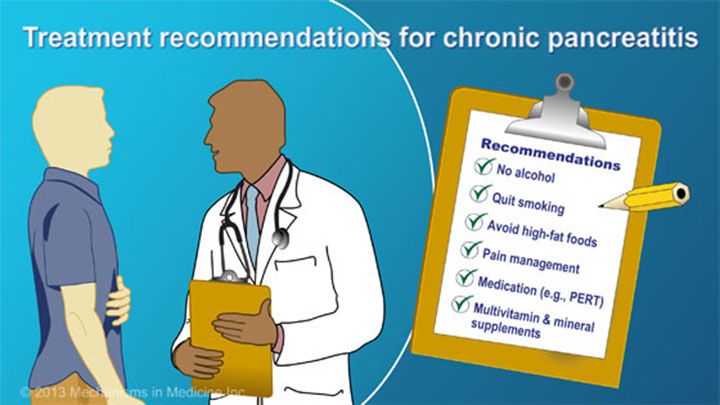
If it’s not possible to resolve the underlying condition or the treatment doesn’t relieve your symptoms, such as with poorly responsive celiac (i.e., symptoms persist even though the person with celiac is on a gluten-free diet), EPI needs to be treated with diet modifications, vitamin and mineral supplements, and pancreatic enzyme replacement therapy (PERT), according to Dr. Gardner. “The goal of EPI treatment is to replace the digestive function of the pancreas,” Gardner says. Here’s how the three elements of EPI treatment can help do this.
An EPI-Friendly Diet
Depending on what’s causing your symptoms, your doctor may recommend you stick to a healthy, well-balanced diet. According to StatPearls, optimal management and treatment for EPI should include eating a healthy diet that’s as close to normal as possible (which includes healthy fats rather than eliminating all fats, which used to be the recommendation) and being screened regularly to avoid nutritional deficiencies (such as by taking vitamins).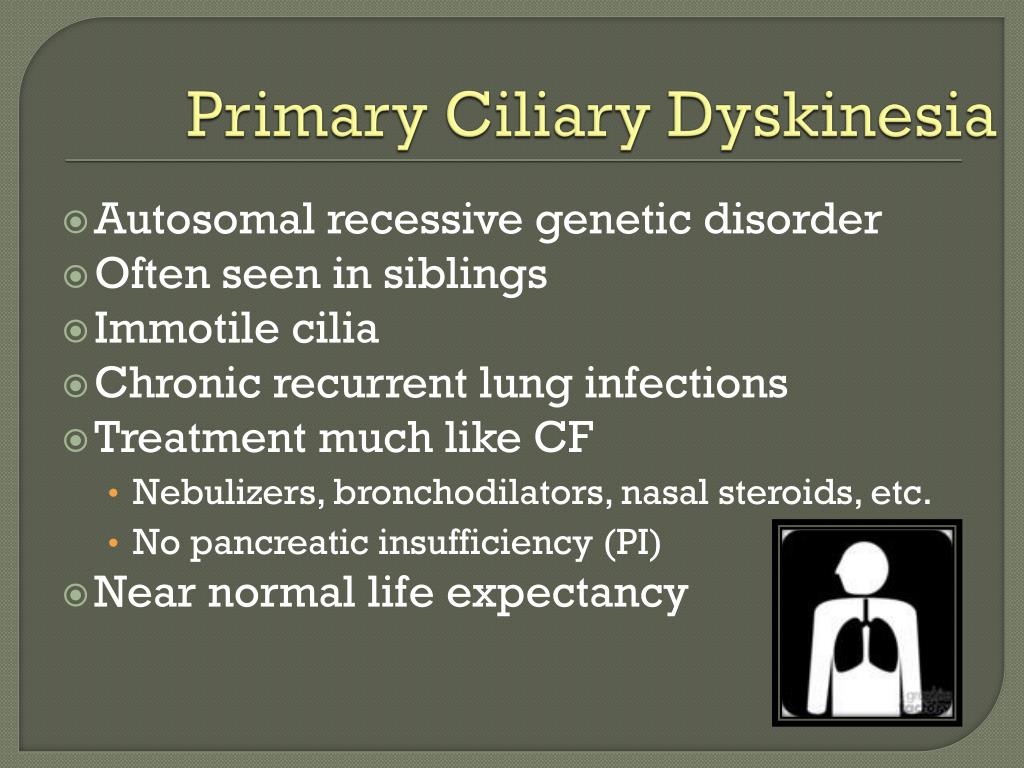
The exception for this recommendation is people with cystic fibrosis (CF). A high-fat diet with increased amounts of PERT has been shown to improve lung disease in people with CF, so low-fat diets are no longer recommended for them, according to research. A diet higher in fat, protein, and calories can also help children with CF and EPI maintain a healthy weight, according to the Cystic Fibrosis Foundation.
People with EPI are advised to eat plenty of fruits and vegetables, which are good sources of vitamins and minerals, Gardner says. Eating smaller meals more frequently may help reduce stomach pain, he adds.
Vitamin and Mineral Supplements for EPI
If you have EPI, you may have trouble digesting fat-soluble vitamins, including vitamins A, D, E, and K, Gardner says. Your doctor may recommend that you take them in the form of a daily supplement along with certain antioxidants — such as vitamin C and selenium — to help treat a pancreas that’s inflamed or under metabolic stress, according to Dr. Whitcomb.
Whitcomb.
That said, not everyone who has EPI will need vitamin supplements if they take a successful dose of pancreatic enzymes, he says.
Treating EPI With PERT
PERT can help you manage EPI and prevent malabsorption and gastric discomfort. You must work with your doctor to determine how much enzyme replacement you need, though, because everyone is different, according to Pancreatic Cancer Action, (PCA) a charity based in Hampshire, England, that focuses on early diagnosis of pancreatic cancer. “Start with a moderate dose and adjust as necessary, depending on your symptoms,” Gardner says. “You can be tested after a few months to see how you’re responding.”
It’s important that you take the enzymes just before and during meals or snacks, not after you eat, according to PCA. And take your medication with cold — not hot — drinks, because heat can damage the enzymes, notes PCA.
Pancreatic enzyme supplement capsules contain a mixture of digestive enzymes, including lipase to break down fat, protease to assist with digestion of protein, and amylase for carbohydrates, according to PCA. The more fat in your meal, the higher the dose of enzymes you’ll likely need, Whitcomb says.
The more fat in your meal, the higher the dose of enzymes you’ll likely need, Whitcomb says.
PERT can cause diarrhea or constipation, nausea, and gastric upset. You may need to experiment and find the brand you can best tolerate, because different manufacturers use different coatings, according to PCA. If you take the enzymes with antacids, they may not be as effective, according to the Pancreatic Cancer Action Network.
What Else You Can Do for EPI
In addition to taking these three main EPI treatment steps, it’s a good idea to abstain from alcohol and smoking. Excessive drinking can damage the pancreas, according to the NIDDK, and smoking elevates your risk for pancreatic diseases, including cancer and pancreatitis, according to PCA.
By subscribing you agree to the Terms of Use and Privacy Policy.
what means, preparations and medicines are used in the treatment of pancreas?
The pancreas, one of the most important organs in the human body, is responsible for the digestion of food and the absorption of nutrients from it. The process of digestion is under the action of special enzymes, and if too little of them is produced by the gland, enzyme deficiency occurs – a kind of so-called food intolerance, sometimes leading to very serious consequences. What can be done if an enzyme deficiency has already been diagnosed? We answer the question in our article.
The process of digestion is under the action of special enzymes, and if too little of them is produced by the gland, enzyme deficiency occurs – a kind of so-called food intolerance, sometimes leading to very serious consequences. What can be done if an enzyme deficiency has already been diagnosed? We answer the question in our article.
In the activity of the pancreas, two main functions can be distinguished – endocrine and exocrine.
Endocrine function is nothing more than the production of special hormones released into the blood and affecting the general condition of the body. These hormones are produced by specific areas of the gland called islets of Lagerans . The most well-known hormone produced by the pancreas is insulin, which maintains the desired level of glucose in the blood. But in addition to insulin, iron also produces the appetite-stimulating hormone ghrelin, glucagon, somatostatin, and pancreatic polypeptide.
The exocrine function of the pancreas is the production of digestive enzymes by specific acinar cells . These cells produce pancreatic juice, which contains a whole range of digestive enzymes. The most numerous group of them are protein-digesting proteases. In addition to them, iron produces lipase, which breaks down fats, nucleases, whose task is to break down nucleic acids, amylase, which is responsible for the processing of polysaccharides, and elastase, which breaks down connective tissues.
During the normal functioning of the gland, only such an amount of pancreatic juice is produced that is necessary for the digestion process. But with certain pathologies and failures in the production of enzymes, enzyme deficiency occurs, which is fraught with incomplete digestion of food and leads to violations of all metabolic processes.
Usually there are several forms of enzyme deficiency, the most common of which are gastrogenous and pancreatic. Gastrogen insufficiency is most often caused by diseases of the stomach (in particular, damage to the mucous membrane by bacteria Helicobacter pylori ) or operations on it, due to which its secretion decreases, and hence the stimulation of the pancreas. But it is the reduced secretion of the stomach that can lead to a constant functional stress of the gland and its subsequent depletion. A decrease in the secretory function of the stomach is diagnosed at abnormally high concentrations (up to 10-20 pmol / l in blood serum and above) of the polypeptide hormone – gastrin-17, which manifests itself in a drop in the level of acidity of gastric juice, and gastroenterologists call it hypo- or achlorhydria. At the same time, increased acid secretion with extremely low gastrin-17 is associated with the risk of gastroesophageal reflux, and in a simple way – heartburn.
Gastrogen insufficiency is most often caused by diseases of the stomach (in particular, damage to the mucous membrane by bacteria Helicobacter pylori ) or operations on it, due to which its secretion decreases, and hence the stimulation of the pancreas. But it is the reduced secretion of the stomach that can lead to a constant functional stress of the gland and its subsequent depletion. A decrease in the secretory function of the stomach is diagnosed at abnormally high concentrations (up to 10-20 pmol / l in blood serum and above) of the polypeptide hormone – gastrin-17, which manifests itself in a drop in the level of acidity of gastric juice, and gastroenterologists call it hypo- or achlorhydria. At the same time, increased acid secretion with extremely low gastrin-17 is associated with the risk of gastroesophageal reflux, and in a simple way – heartburn.
Pancreatic enzyme deficiency is usually caused by various pathologies of the pancreas itself. Most often, it is a consequence of pancreatitis – inflammation of the pancreas caused by various reasons.
Most often, it is a consequence of pancreatitis – inflammation of the pancreas caused by various reasons.
Important!
Enzyme deficiency is difficult to diagnose without proper laboratory tests, since all its main symptoms are very similar to those of other diseases – stomach or duodenal ulcers, gallstone disease, irritable bowel syndrome. Another problem is that the clinical symptoms of enzyme deficiency begin to appear only when the organ has lost almost 90% of its functionality .
So, in order to diagnose an enzyme deficiency, it is necessary to conduct a whole range of studies, from laboratory tests to instrumental diagnostics.
Laboratory tests include:
- CBC.
- Blood test for sugar, vitamins and fatty acids.
- Biochemical blood test to determine the level of pancreatic and stomach enzymes: alpha-amylase and pancreatic amylase, lipase, as well as pepsinogen I and pepsinogen II, pepsin, etc.

- Coprogram – analysis of feces for the content of undigested fiber in it, determination of the level of fats and carbohydrates.
- ELISA test (determination of the level of elastase-1 in feces).
Instrumental examinations : Ultrasound, CT, MRI, celiacography, gastroscopy, duodenoscopy, functional tests.
All together allows the doctor to accurately diagnose enzyme deficiency, identify its causes and prescribe adequate therapy.
Consequences of diseases of the pancreas
Congenital enzyme deficiency is the result of a genetic pathology due to which the secretion of enzymes is impaired or completely blocked. Acquired insufficiency, as a rule, is a consequence of a disease, and competent treatment in this case can significantly slow down the risks of its development. Acquired enzyme deficiency is divided into primary and secondary.
Primary enzyme deficiency is caused by diseases of the pancreas itself, as a result of which it produces fewer enzymes. Such diseases can be acute and chronic pancreatitis, tumors and cysts, cystic fibrosis, surgical interventions, etc. In secondary iron deficiency, enough enzymes are produced, but for some reason their action in the small intestine is reduced.
Such diseases can be acute and chronic pancreatitis, tumors and cysts, cystic fibrosis, surgical interventions, etc. In secondary iron deficiency, enough enzymes are produced, but for some reason their action in the small intestine is reduced.
Both types of enzyme deficiency have similar symptoms. They are accompanied by the so-called maldigestion syndrome . It is characterized, first of all, by diarrhea, polyfecalia, steatorrhea (high fat content in feces). Since, due to indigestion, the body does not receive the required amount of proteins and vitamins, the patient develops beriberi and anemia. Progressive weight loss may occur. Other life-threatening symptoms of enzyme deficiency include heartburn, flatulence, nausea, and sometimes even vomiting, which can lead to dehydration.
Enzyme deficiency in any of its forms requires treatment, since the depletion of the body caused by it can lead to very serious consequences.
Proper nutrition and diet is a must
In the treatment of enzyme deficiency, the diet and rules play a huge role. Their main tasks in this case are to supply the body with the necessary amount of proteins and vitamins, maintain a normal blood sugar level, mechanically and chemically spare the pancreas and eliminate symptoms: pain, bloating and diarrhea after eating. To do this, several important principles must be observed.
Their main tasks in this case are to supply the body with the necessary amount of proteins and vitamins, maintain a normal blood sugar level, mechanically and chemically spare the pancreas and eliminate symptoms: pain, bloating and diarrhea after eating. To do this, several important principles must be observed.
- Fractional meals. It is recommended to eat several times a day – from six to eight, in small portions (100-300 g).
- Inclusion in the diet of a large amount of easily digestible protein foods.
- Eating only warm foods: cold and hot foods irritate the pancreas.
- Exemption from the fried and spicy menu. Boiling, steaming or baking is recommended.
- Mechanical grinding of food during cooking. Proper chewing plays an important role, since with enzyme deficiency it is very difficult for the body to digest large pieces of food.
- Limit salt intake to six to eight grams per day.
Drinking immediately after a meal is not recommended as it can reduce the concentration of gastric juice and create problems for the digestive system.
In case of acute pancreatitis or exacerbation of chronic a special diet is recommended, the first version of which is prescribed only on the third day of the disease. Prior to this, the patient is recommended complete fasting to reduce the load on the pancreas.
After the exacerbation is removed, you can expand the diet, but subject to certain requirements. In case of enzyme deficiency, it is recommended to exclude certain foods from the diet. Due to the lack of enzymes, it is difficult for the body to digest fatty fish and meat, vegetables with a high fiber content, canned food, and smoked meats. Therefore, you should not eat pork, fatty beef, high-fiber vegetables, sausages, trout, salmon, etc. They can be replaced with chicken breast, turkey or rabbit meat. Of the fish, hake, pike perch, pollock are allowed.
Peas, beans, white cabbage, bananas, spinach, grapes, and other vegetables and fruits that cause flatulence in the intestines due to fermentation should also be excluded. Onions, garlic and hot spices are forbidden – these are the strongest chemical irritants for the pancreas, and you can return to them only after a long remission. It is allowed to eat potatoes, cucumbers, pumpkins, sweet apples and pears (preferably in baked form), dried fruits, zucchini, broccoli and cauliflower, carrots. Mayonnaise, ketchup and other sauces, spices and seasonings are undesirable.
Onions, garlic and hot spices are forbidden – these are the strongest chemical irritants for the pancreas, and you can return to them only after a long remission. It is allowed to eat potatoes, cucumbers, pumpkins, sweet apples and pears (preferably in baked form), dried fruits, zucchini, broccoli and cauliflower, carrots. Mayonnaise, ketchup and other sauces, spices and seasonings are undesirable.
Sweet lovers should know that if you have an enzyme deficiency, you should not eat chocolate, ice cream, and confectionery creams. It is better to replace them with marshmallows, marshmallows, mousses, marmalade, jelly, honey.
Soups are very useful for all digestive disorders, however, only those that are cooked in vegetable or cereal broths. Strong meat and fish broths are also chemical irritants for the pancreas, so the so popular and supposedly medicinal chicken broth will have to be abandoned. Soups on secondary meat broths are acceptable.
Bread is only recommended for yesterday’s baking.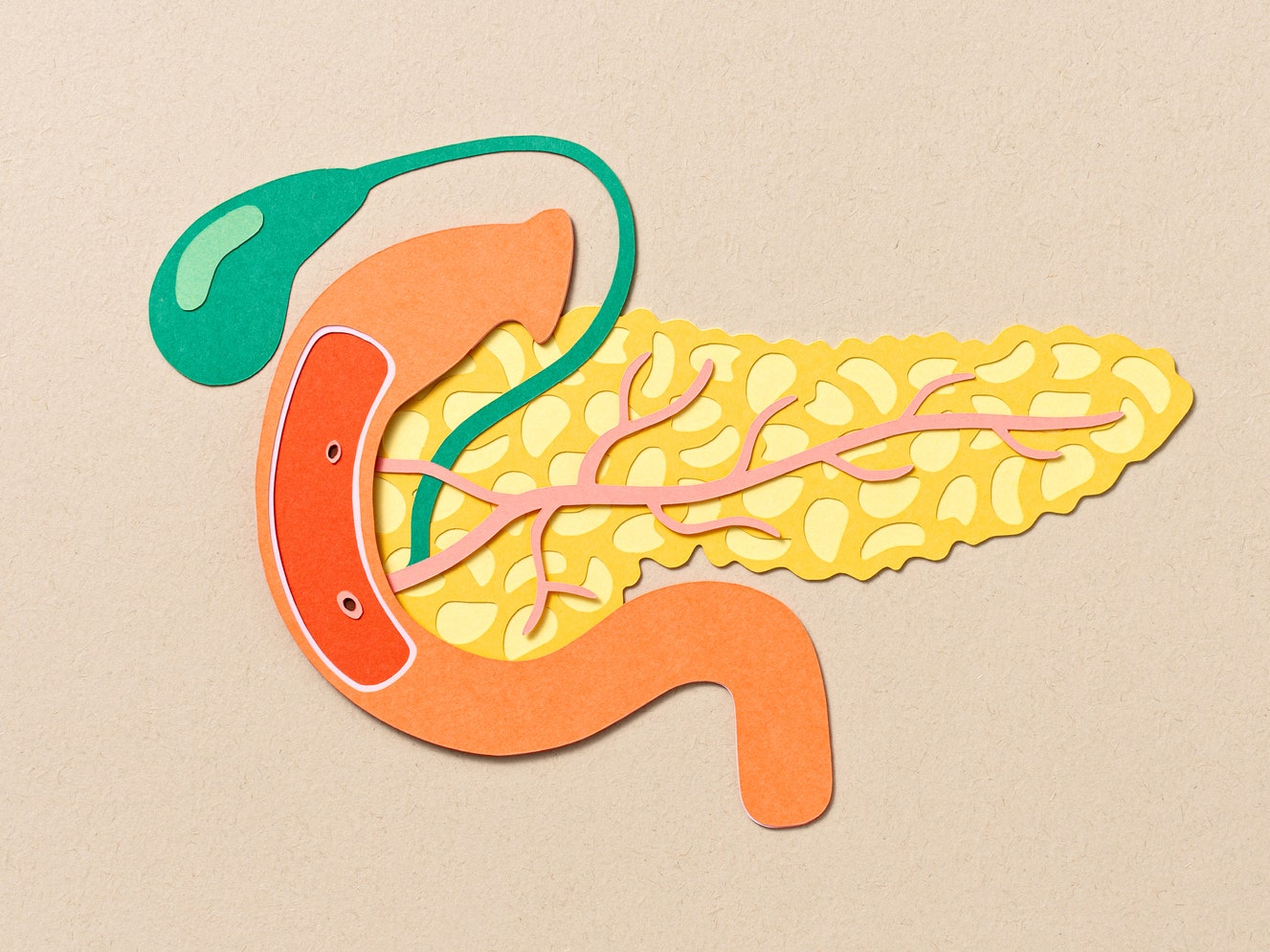 Fresh white bread provokes fermentation in the intestines and bloating, the same effect is exerted by all other pastries: sweet buns, buns, croissants. Dry biscuit cookies are allowed.
Fresh white bread provokes fermentation in the intestines and bloating, the same effect is exerted by all other pastries: sweet buns, buns, croissants. Dry biscuit cookies are allowed.
Alcohol, all carbonated drinks, juices are strictly prohibited, it is not recommended to drink strong coffee and tea. All this can be completely replaced with jelly, natural vegetable juices or dried fruit compotes, weakly brewed tea.
Compliance with the diet helps to improve digestion and unload the pancreas. But with a significant decrease in the production of enzymes by her, one diet will not be enough. In this case, substitution therapy helps.
What agents and preparations are used for pancreatic enzyme insufficiency?
To correct the condition, first of all, the therapy of the underlying disease is carried out – the main cause of enzyme deficiency. But to maintain the body’s ability to digest food, a doctor may prescribe enzymes. Carrying out enzyme therapy is possible only if the patient does not have acute pancreatitis or exacerbation of the chronic form.
Enzyme replacement therapy is not able to completely restore the functioning of the pancreas, but it can take on some of the work that the affected organ is unable to cope on its own. Enzyme therapy helps the patient to fully assimilate nutrients and maintains the normal state of the body for a long time.
The action of enzyme preparations not only helps digestion – it also relieves pain. This is due to the fact that a low level of pancreatic enzymes in the lumen of the duodenum causes the gland to actively produce them, and under the action of enzymes in the affected organ, the process of self-digestion increases, intraductal pressure increases, and pain occurs. Enzyme therapy drugs increase the level of enzymes, reduce the secretory activity of the gland and provide it with functional rest.
Most often, in case of enzyme deficiency, doctors recommend preparations containing pancreatin of animal origin, an extractive substance from the pancreas. It contains all the necessary digestive enzymes: amylase, protease, lipase . .. Sometimes bile components and hemicellulase, an enzyme that breaks down cellulose in food, are added to preparations.
.. Sometimes bile components and hemicellulase, an enzyme that breaks down cellulose in food, are added to preparations.
Today, there are many different enzyme preparations in different forms of release – in tablets, capsules … Which of them will be the most effective, only a specialist decides, but he will always choose the form of the preparation, where the enzymes are enclosed in microgranules.
The choice of treatment regimen for enzyme deficiency is determined by the attending physician, since each case requires an individual comprehensive approach. Much in the choice depends on the type of underlying disease, the nature of the enzyme deficiency itself, the degree of its development, the severity of pain and other clinical manifestations. Only taking into account all these factors, it is possible to choose an adequate treatment and achieve a positive result in treatment.
A new approach to the treatment of exocrine pancreatic insufficiency
Exocrine pancreatic insufficiency is defined as a decrease or loss of its exocrine function. A drop in intraduodenal lipase levels below 5–10% of normal leads to pancreatic steatorrhea, weight loss, and a potential decrease in quality of life.
A drop in intraduodenal lipase levels below 5–10% of normal leads to pancreatic steatorrhea, weight loss, and a potential decrease in quality of life.
Over the years, many tests have been developed by medical scientists to determine pancreatic insufficiency, but which of them to give preference remains unclear, as well as understanding the causes of a false positive test. This leads to confusion when prescribing substitution therapy.
In order to eliminate contradictions and debunk existing myths, the staff of the Beth Israel Deaconess Medical Center at Harvard Medical School, Boston, USA, by revising existing approaches to the diagnosis and treatment of exocrine insufficiency pancreas have developed their own clinical guidelines.
Diagnostics
The authors call the statement that exocrine pancreatic insufficiency is determined by the loss of the enzyme-producing function in excess of 90%. In their opinion, a deficient state is preceded by a gradual decrease in excretory function. Therefore, it is advisable for the patient to carry out early diagnosis of insufficiency.
Therefore, it is advisable for the patient to carry out early diagnosis of insufficiency.
However, many methods for diagnosing exocrine pancreatic insufficiency developed in recent decades have low sensitivity or specificity (eg, measurement of serum trypsin, steatorrhea test) and/or limited use (eg 13 C-labeled triglyceride test) .
Considered the gold standard, the 72-hour faecal fat collection at lipid intakes below 100 g/day is time-consuming and difficult to tolerate due to bloating, abdominal discomfort, flatulence, and worsening steatorrhea. Diseases that reduce fatty acid resorption by the intestinal mucosa, such as Crohn’s disease, dysbacteriosis, and short bowel syndrome, can cause abnormal 72-hour collection values despite normal exocrine pancreatic function.
Such a method as the determination of the level of fecal elastase in patients with chronic diarrhea, according to the authors, is unreliable if it is not possible to assess its content in formalized stools. In addition, in moderate exocrine pancreatic insufficiency, the sensitivity and specificity of this method is reduced by 30%. For pediatric practice, measurement of fecal elastase remains a valuable non-invasive screening test for exocrine pancreatic insufficiency with a predictive value of 9.9%.
In addition, in moderate exocrine pancreatic insufficiency, the sensitivity and specificity of this method is reduced by 30%. For pediatric practice, measurement of fecal elastase remains a valuable non-invasive screening test for exocrine pancreatic insufficiency with a predictive value of 9.9%.
Substitution therapy
The aim of substitution therapy is to eliminate malabsorption, reduce the severity of symptoms of indigestion and prevent their negative consequences. It is generally accepted among clinicians that enzyme replacement therapy should be started with the lowest available dose of the drug, taken at any time before meals and at bedtime. In contrast, the authors suggest titrating the dose to the required volume and taking the drug fractionally: with the first sip, gradually adding enzymes during the entire meal and at the end of the meal. Dosing and frequency of enzyme replacement drugs remain challenging as their effects are not bioequivalent in vitro , and clinical studies to determine the bioavailability of in vivo are not enough.
Thus, if food intake takes less than 15 minutes, the entire dose of the drug can be taken at the beginning of the meal. For a 15- to 30-minute meal, the authors suggest dividing the full dose into two doses, with the first sip and mid-meal, respectively. For meals lasting longer than 30 minutes, the authors recommend dividing the entire dose into three doses in the same way. The rationale for the fractional intake of pancreatic enzymes during meals is to mimic the dynamics of the action of their own, endogenous enzymes. In particular, a larger amount of food consumed and / or an increase in its fat content should be provided with an adequate amount of enzymes.
For patients with suspected exocrine pancreatic insufficiency on clinical grounds, empiric enzyme replacement therapy without diagnostic testing may be considered. When receiving a negative or incomplete effect of replacement therapy, concomitant gastrointestinal diseases such as lactose intolerance, bacterial infection, parasitic diseases (especially giardiasis), cholestasis, colitis, celiac disease, short bowel syndrome and Crohn’s disease should be taken into account. Other reasons include insufficient dosage, lack of adherence to the drug regimen, and poor nutrition.
Other reasons include insufficient dosage, lack of adherence to the drug regimen, and poor nutrition.
The authors point out the need to optimize the existing recommendations, which provide for the amount of enzyme replacement therapy in the range from 25 to 80 thousand units of lipase with the main meal, leaving the questions of the sequence of taking the drug and its amount before, during or after meals in the zone of uncertainty. In fact, the goals of treatment cover a broader list of problems, in addition to reducing the severity of symptoms of steatorrhea.
All pancreatic enzyme preparations are produced in the form of encapsulated mini-microspheres or microtablets, differing in particle size and their release kinetics depending on the level of intraduodenal acidity. Enteric coatings of pancreatic enzyme preparations, designed to protect the lipase in their composition from acid denaturation in the stomach, are most effective at pH >6. However, in patients with cystic fibrosis, the duodenal pH is <6.

